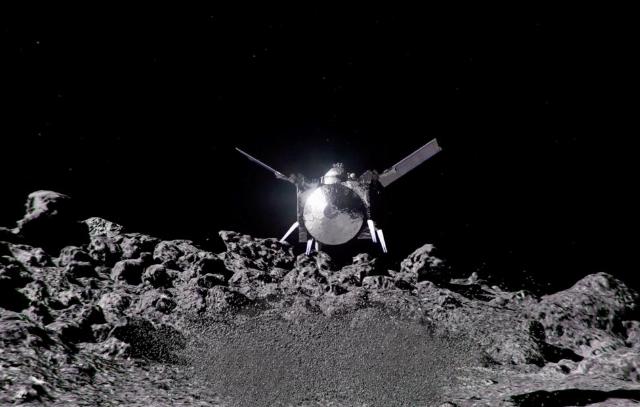The work will be carried out using a descent vehicle based on a CubeSat microsatellite.
MOSCOW, September 8th. /tass/. For the first time, planetary scientists will study the structure of the interior of the asteroid Apophis and conduct the first-ever seismic measurements on the surface of a small celestial body as part of the RAMSES mission, which will help scientists uncover the structure of this potentially dangerous near-Earth asteroid. This was announced by Patrick Michel, scientific director of the RAMSES mission, at an online press briefing at the EPSC-DPS2025 scientific congress.
"Previous asteroid missions have shown that these celestial bodies are often arranged and behave differently from what observations from Earth indicate. The only way to get reliable data is to conduct on-site observations, and in the case of Apophis, nature itself gives us the opportunity to conduct them. We have never conducted seismic measurements on an asteroid before, and now for the first time we will observe how these waves propagate through the bowels of the asteroid," Michel said.
These measurements, as Michel noted, will be carried out on the surface of the asteroid Apophis using a lander based on a CubeSat microsatellite, which will be manufactured by ESA's international partners using the experience and scientific instruments that were created for previous European interplanetary probes, including the HERA asteroid mission launched last October to the asteroid. Didim.
According to the researcher, these seismic observations will be conducted in parallel with radar scanning of the surface of Apophis, which will be carried out using the second microsatellite of the RAMSES mission, and analyzing the properties of the asteroid using the five main instruments of the RAMSES spacecraft. These observations will help scientists make a complete map of the asteroid's interior for the first time and understand how homogeneous it is.
According to Michel, this information is critically important for studying how the convergence of the Earth and Apophis at a record short distance, only 31 thousand km, and the tidal forces generated by this event will affect the properties of the asteroid's interior, its flight path and other characteristics that determine the likelihood of its collision with the Earth. To solve this problem, all three devices will conduct a kind of "broadcast" from the asteroid at the moment of its approach to the Earth and transmit data every minute.
As Paolo Martino, head of the RAMSES project at ESA, added, the use of "stand-ins" of scientific instruments from the HERA mission and already proven technologies during the assembly of the mission will help launch it in record time, about three years, and at the same time keep costs at a relatively low level - according to current estimates of scientists, the total budget of the mission is likely to It will not exceed 300-360 million euros. At the same time, Martino noted that RAMSES, unlike other missions, has only one window and an attempt to launch, which makes any delays in mission preparation extremely dangerous and indicates the importance of strict adherence to its preparation schedule.
About the RAMSES mission
The RAMSES mission project provides for the creation of an interplanetary probe, which will be launched into space in late spring 2028 to test planetary protection technologies. In February 2029, it will approach the near-Earth asteroid Apophis, which has long been considered the most dangerous object in the immediate vicinity of the Earth, and launch two microsatellites into its orbit, one of which will land on this celestial body. The data collected by RAMSES will help us understand how the shape, structure and properties of Apophis will change after its approach to Earth in April 2029.

